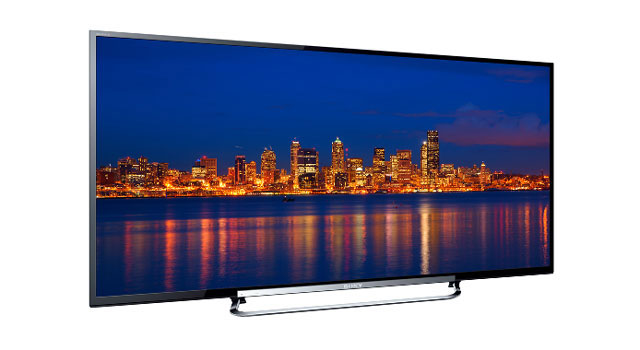
There’s no other way of describing the technology: the latest ultra-high-definition (UHD) television sets look absolutely amazing. From television to cinema, the “4K” resolutions on offer represent a new frontier in entertainment. But the industry faces a big and perhaps even insurmountable challenge: distribution.
Solving the distribution problem could mean the difference between 4K becoming the new standard for video playback or just a novelty for the wealthy.
Though 4K resolutions represent the next step in high-definition video, standards for the format have yet to emerge and no one’s really figured out how to distribute video, with its massive file footprint, efficiently and cost effectively. How exactly does one distribute files that can run to hundreds of gigabytes? And will broadcasters ever realistically offer content in this format?
Even in developed markets, with high-speed, low-cost broadband, concerns are being voiced about the implications of trying to distribute UHD material to end users — to consumers who aren’t used to waiting for any length of time for content to load before they can start playing it back.
Japan’s Sony, which helped pioneer the Blu-ray optical disc format for high-definition video playback, hinted at the Consumer Electronics Show (CES) in Las Vegas this week that it is looking at a dedicated digital distribution service for 4K content. However, Sony executives have been light on the detail.
Media reports earlier this week quoted Sony CEO Kazuo Hirai as saying that although a physical format might be necessary or even desirable to distribute 4K content — and could even be welcomed by consumers — his company is looking at network-based solutions for distribution first.
Hirai also warned that standards for 4K content still needed to be finalised. Sony has traditionally favoured creating its own formats, but with so many other competitors developing 4K products, this may not be feasible.
Although some of the parameters for 4K TVs have been all but finalised — a resolution of 3 840×2 160 pixels and an aspect ratio of 16:9 for TVs, for example — for cinema there are already a handful of different resolutions and aspect ratios, and as many cameras capable of recording each format.
How big is big?
Johannesburg-based independent filmmaker and post-production specialist Stephen Abbott says it’s unclear just how large, in terms of gigabytes, 4K movies will be when standards have settled down.
“No one has really come up with a 4K distribution standard for the home yet,” he explains. The size of a 4K movie depends on a number of variables, including the 4K standard used, the bit-rate and the type of compression employed.
Compression is unavoidable and is done using various algorithms that, for example, identify scenes with static backgrounds that needn’t be rendered separately for each frame and result in smaller files without a discernible loss in quality. The difference between good and poor quality video is often the result of the compression algorithm used.

Given that uncompressed 4K footage has a bit-rate of about 600MB/s, and even the fastest solid-state drives operate at only about 500MB/s, compression isn’t merely likely, it’s necessary.
American digital cinema camera company Red is well known for its handling of video compression and recently announced plans of its own to create a 4K distribution network for cinemas using a dedicated device called the Redray 4K Cinema player, which will allow content to be stored and played back using an Ethernet connection and a 1TB hard drive.
Red’s distribution system is called Odemax and is expected to be launched by March. It’s an attempt by Red to bridge the distribution divide between content producers and distributors and cinemas. It could also be used by high-end home users and will, like iTunes or Netflix, mean bypassing traditional content distribution channels.
Perhaps the most interesting thing about Red’s proposal is its claim that it can compress 4K content to a bit-rate as low as 2,5MB/s, resulting in video files — in the .red format — of under 20GB for an average-length feature film. Even at this bit-rate, it would still mean consumers need at least a 20Mbit/s connection at home in order to stream content without buffering, Abbott says.
Abbott expects to see 4K used extensively in cinemas long before it makes its way to the consumer space, if it ever does on a large scale. He says it makes more sense in the cinema environment, particularly because of the larger screens and the distance viewers sit from them.
As it is, consumers are often hard-pressed to identify higher-resolution content on their TVs, especially given that the compression applied to a great deal of HD content — like the content supplied by satellite broadcasters — often results in content that is HD in name alone.
“You could upscale content to 4K, but if you compressed it badly, it would be only marginally better than a good HD stream,” Abbott explains. “Similarly, people have historically made HD formats so heavily compressed it’s probably not fair to call them HD at all.”
Abbott says, too, that when it comes to TVs, if they’re being viewed from some distance, as is usually the case in most living rooms, a 4K 60-inch screen is probably reaching the discernible resolution limits of the human eye. “Just as there’s no point printing above 600 dots per inch because you can’t see it without a microscope, the same thing is happening with TV,” he says.
Furthermore, resolution is not the only aspect of visual experience. “Frame rates, brightness, dynamic range — these are all factors,” Abbott says. Just as digital stills camera manufacturers have somewhat moved beyond talking about megapixels and resolution to talking about details like high-ISO noise and dynamic range, so TV manufacturers could go the same way. “There are lots of places to go besides more Ks.”
Is 4K overkill?
Standalone content aside, even with heavy compression, 4K content presents enormous challenges for broadcasters.
DStv Online CEO John Kotsaftis says 4K is highly unlikely to be used by broadcasters in the foreseeable future. “It’s way too expensive to give up the amount of satellite capacity required to broadcast at 4K,” he says.

Kotsaftis says very few broadcasters even offer content at 1080p.
While early adopters may embrace 4K in the same way they did Blu-ray, Kotsaftis says he thinks the uptake for 4K will be even slower than Blu-ray.
“There’s a quality versus convenience curve that we’re already on,” he says. Consumers are willing to make all sorts of quality compromises in exchange for speedy and convenient access to content, he argues.
“I don’t think [4K] is going to push the boundary,” Kotsaftis says. “Everyone thought 3D would be the next big thing but it hasn’t been.” He suggests that much like 3D, 4K is something manufacturers hope will allow them to sell new TVs, but that most consumers probably won’t care for it.
“An acceptable level of quality has been reached,” he says. “Now it’s about content and convenience. Where you probably could tell the difference in quality is on larger form factors.”
Kotsaftis says manufacturers will probably begin shipping and promoting larger TVs. “In coming years, 50-inch or 55-inch screens will have become the sort of standard that 40-inch TVs are now. To exploit 4K, you need a larger form factor. You’re just not going to notice enough of a difference on smaller screens.”
The same quality/convenience argument leads him to believe that physical media for 4K content will struggle to gain traction among consumers. “4K implies going back to physical media. Even over the Internet, it’s going to require massive files and, given the choice, most people would happily settle for a 720p or 1080p file anyway.”
With bandwidth of around 10Mbit/s, Kotsaftis says consumers can watch “really high quality video over the Internet”. Although South Africa is still catching up with developed markets when it comes to broadband, he still can’t envisage a situation where people want optical or physical media. “Physical media has lost its value,” he says. “I used to prize it and cherish my CDs and DVDs, but now I can get most of that content online.”
Audio streaming services like Spotify have taken off in the US and Europe, followed closely by services like Netflix for video content. Kotsaftis says he expects the same thing will happen in South Africa. Aside from the convenience of streaming, there’s the option of getting recommendations based on viewing or listening habits, something physical media don’t offer.
“I don’t think the big change in TVs is going to be 4K. I think it’s going to be about functionality. TVs are going to get easier to use and user interfaces are going to get speedier and more elegant,” Kotsaftis says. The problem of content has, by and large, been solved, he says, but ease of use and proper integration of applications and online tools into TVs has some way to go. — (c) 2013 NewsCentral Media

